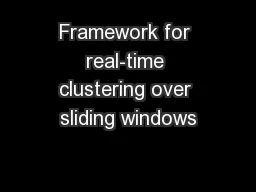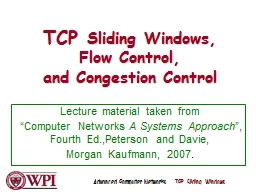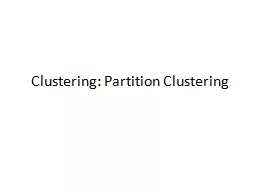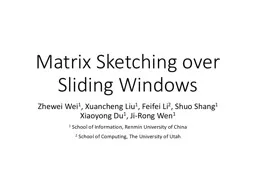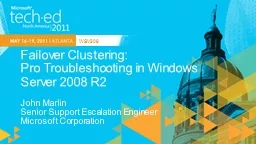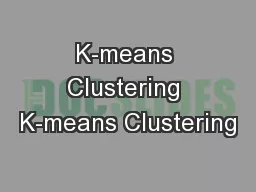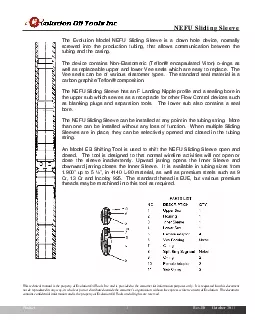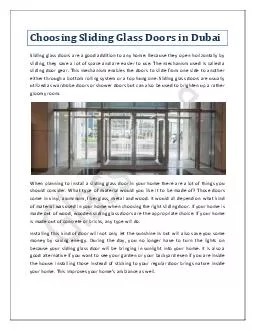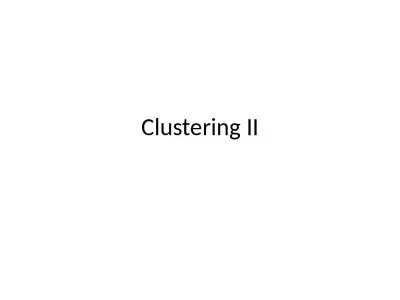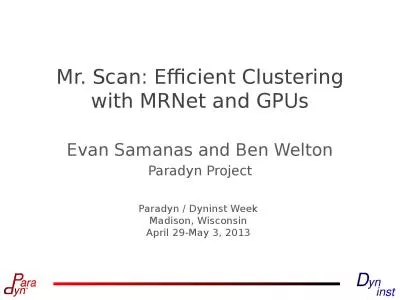PPT-Framework for real-time clustering over sliding windows
Author : lindy-dunigan | Published Date : 2017-12-06
Sobhan Badiozamany Kjell Orsborn Tore Risch Uppsala University Sweden Emails firstnamelastnameituuse Outline Why clustering over sliding window is interesting State
Presentation Embed Code
Download Presentation
Download Presentation The PPT/PDF document "Framework for real-time clustering over ..." is the property of its rightful owner. Permission is granted to download and print the materials on this website for personal, non-commercial use only, and to display it on your personal computer provided you do not modify the materials and that you retain all copyright notices contained in the materials. By downloading content from our website, you accept the terms of this agreement.
Framework for real-time clustering over sliding windows: Transcript
Download Rules Of Document
"Framework for real-time clustering over sliding windows"The content belongs to its owner. You may download and print it for personal use, without modification, and keep all copyright notices. By downloading, you agree to these terms.
Related Documents

